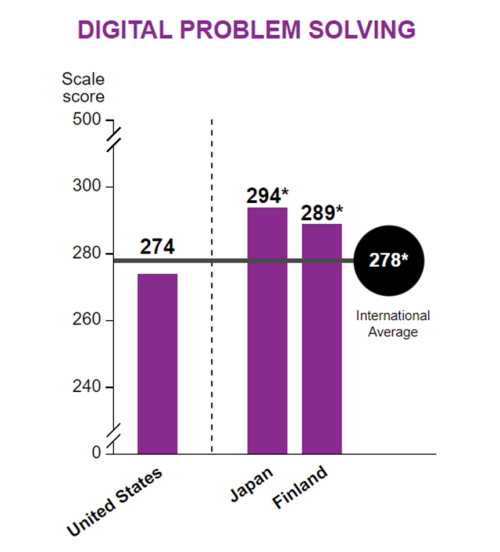21% of adults are technologically illiterate
Just 7% of adults around the world can manage conflicting requests to reserve a meeting room using a reservation system, then email people to let them know whether they got the room they requested.

Which means that if you create websites or other technological interfaces for technologically competent folks, you’ll miss 93% of worldwide adults ages 16 to 65, according to the 2017 Program for the International Assessment of Adult Competencies, or PIAAC[1].
How low can you go?
The results?
Adults worldwide weighed in at an average problem-solving proficiency rate of 278 out of 500. That puts us at level 1, or basic, problem-solving skills.
World tech skills 2013Just 8% of adults worldwide are competent at technology. |
|||
| Numeracy level/score | Percentage of worldwide adults 16+ | Skills | Sample task |
| Below level 1 (Nonliterate) 0-240 |
21% | Use one function within a generic interface to complete a simple, well-defined task. | PIAAC didn’t release a sample task, but these tasks seem to be limited to clicking links; navigating using back and forward arrows and home buttons; and bookmarking web pages. |
| Level 1 (Basic) 241-290 |
39% | Complete tasks with few steps that require little or no navigation and have few monitoring demands. | Sort five emailed responses to a party invitation into pre-existing folders to track who can and cannot attend. |
| Level 2 (Intermediate) 291-340 |
34% | Navigate across pages and applications, then evaluate the relevance of the information; some integration and inferential reasoning may be needed. | Locate on a spreadsheet with 200 entries members of a bike club who meet two conditions, then email it to the person who requested it. |
| Level 3 (Competent) 341-500 |
7% | Perform multiple steps and operations; navigate across pages and applications; evaluate data’s relevance and reliability. | Manage conflicting requests to reserve a meeting room using a reservation system. Email people to let them know whether they got the room they requested. |
That means that, on average, these adults can sort five emailed responses to a party invitation into pre-existing folders to track who can and cannot attend. But we struggle to locate on a spreadsheet with 200 entries members of a bike club who meet two conditions, then email the information to the person who requested it.
Below average

How do you communicate information via websites and other technological tools in an environment where many people struggle to solve problems using technology? Learn to write web copy and plan websites that overcome some of the obstacles of learning online.
About the study
PIAAC is a large, every-10-years study of adult literacy, developed and organized by the Organization for Economic Cooperation and Development.
The study looks at literacy and numeracy, as well as problem solving in high-tech environments. The problem-solving study tested subjects’:
- Knowledge of how different technological environments (email, websites and spreadsheets) work
- Ability to use digital information effectively; understand electronic texts, images, graphics and numerical data; and locate, evaluate, and judge the validity, accuracy and relevance of that information
From 2012-2017, the PIAAC studied the skills of 150,000 adults, ages 16 to 65, in 39 countries.
____
[1] Highlights of the 2017 U.S. PIAAC Results Web Report (NCES 2020-777). U.S. Department of Education. Institute of Education Sciences, National Center for Education Statistics.




